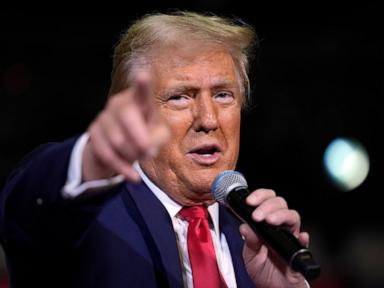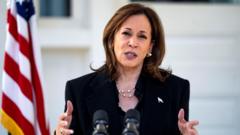Donald Trump is not a fascist. Why that label is inaccurate.

Millions of Americans are bemoaning the “fascism” of President-elect Donald Trump. But the name-calling, in terms of political theory, is inaccurate.
Trump decisively won the 2024 election. But the idea that Trump is a modern fascist still has traction among a supermajority of Democrats. The mainstream portrayal of Trump’s Madison Square Garden rally as the 21st century iteration of Hitler’s 1939 Nazi rally reveals the comparative efficacy of the “fascist” label. And ironically, prominent neoconservative Republicans are publicly concurring with the claim that Trump is a fascist.
But Trump is not fascistic within the historical meaning of the term.
First of all, Trump's questioning the integrity of the 2020 election, and failure to stop a riot in the Capitol during the certification of that election, does not make him a fascist leader. It makes him irresponsible, perhaps, but not fascist.
Fascism is a collectivist form of government that seeks to position itself as a statist third-way alternative to Marxist socialism and liberal capitalism. It fuses public and private sectors to corporately advance a centralized ideology and fulfill what is seen as the nation’s historical destiny.
In this system, private industry is maintained, but it is subordinated to the ultimate authority of the state, purportedly in service of broader national ideals. Prominent examples of fascist leaders include Italy’s Benito Mussolini, Spain’s Francisco Franco and Portugal’s António de Oliveira Salazar, each of whom rose to power in the early 20th century in opposition to liberalism and socialism.
At the core of fascist regimes is institutional censorship and the suppression of ideological divergence. Perpetual war industries, autocratically administered, were a bedrock of fascist hybrid economies. The collective ideal of the nation is thereby elevated to a sacred or even deified status in a fascist regime. Within this ideological framework of nationalist religiosity, the key features of fascism are collectivism, censorship, autocracy and militarism.
Let’s compare this definition of fascism with Trump’s record in practice and see if a fascist would have behaved like Trump.
During an existential emergency like a global pandemic, a fascist would not delegate decision-making authority to the decentralized state governments. A fascist would not attempt to limit the scope of public-private censorship.
A fascist would not appoint judges and justices who interpret the Constitution in an originalist way that minimizes the authority of the federal government and its executive branch. A fascist would not end nebulous wars and avoid starting new ones. A fascist would not embrace and empower a diverse coalition of dissenting members of the opposing party who retain their divergent ideological viewpoints. And a fascist certainly would not sit down for hours-long interviews with counterculture, nonconformist stand-up comedians like Joe Rogan, Theo Von and Andrew Schulz.
In classic non-fascist fashion, Trump did each of these things.
The fascist label is empirically inapt when applied to Trump. He has a track record of being an anti-authoritarian, liberal capitalist in domestic affairs. The attempts to demonize the former and next president by analogizing him to Adolf Hitler, let alone fascists generally, are not only over-stretched, but also dangerous.
Trump’s populist nationalism does not amount to fascism in light of his focus on decentralization, individualism, pluralism and freedom of expression. Trump is a nationalist insofar as he focuses on the interests of the United States, but he is also a non-ideological pragmatist who expressly rejects white supremacy, despite claims to the contrary.
The application of the term "fascist" to Trump has the hook of its appeal in the nationalism of it all. Specifically, the flag-hugging, "great-again" variety. “Fascism” has become a convenient catch-all for nationalist movements with a strong authoritarian leader. The term has accordingly become synonymous with strong-man-cult nationalism. But that is far from the definition of fascism, and Trump is not even close to being an authoritarian.
In recently refuting the claims that Trump is fascist, New York City’s Democratic Mayor Eric Adams astutely proffered: “My answer is no. I know what Hitler has done, and I know what a fascist regime looks like.”
So what does that type of regime look like? Adams was most likely thinking of the Nazis’ fundamentalist racism and genocidal concentration camp system. While those were features of Hitler’s national socialist regime, they are neither necessary nor sufficient for a government to be fascist. Fascist governments are based on a very specific ideology that emerged in the early 20th century to propose an alternative form of government to the pre-existing ideologies of liberalism and communism.
Fascism leans ideologically closer to communism because they are the two major “collectivist” forms of government that rose against Enlightenment individualism. Fascism and communism are also both based on Hegelian ontology, in which history is motivated by an overarching trajectory. In communist philosophy, the arc of history is an economic class struggle between the workers and the owners. In fascist philosophy, the arc of history is a spiritual international struggle between states.
Fascism does retain the capitalistic structure of liberal regimes, albeit with top-down control wielded by a central autocrat.
A more apt modern example of a fascist regime therefore is, despite being run by a “communist party,” the state of China. Chinese President Xi Jinping, leader of the Chinese Communist Party who wields the absolutist power of the state to suppress dissent, also utilizes the organic power of private markets. China is home to hundreds of billionaires — the second most in the world, in fact. It is no longer a communist country, but it is not liberal either. It could be considered on the spectrum of fascism.
Remnants of fascist ideology can be seen in the U.S., neo-Nazis being the obvious manifestation. But Trump disavows those groups and that ideology.
With a second Trump term, we appear to be in store for the opposite of a fascist regime: a coalition of individualist rivals constitutionally implementing government reforms while diplomatically ending international conflicts. The 2028 election will proceed unhindered. And when Trump leaves the White House in 2029, it will be as the outgoing president of a liberal capitalist constitutional republic.
Jeremy Etelson was a Democratic staffer in Maryland. He received a J.D. from George Washington University in 2024 and an M.Phil. in political theory and intellectual history from the University of Cambridge in 2019.
-

Sanders won’t label Trump a ‘fascist,’ calls him ‘authoritarian’
Politics - The Hill - October 27 -

Kamala Harris Calls Donald Trump ‘A Fascist’
Top stories - BBC News - October 24 -

Half of Americans see Donald Trump as a fascist: POLL
Top stories - ABC News - October 25 -

Mark Cuban: 'It’s not a stretch to call Donald Trump a fascist'
Politics - The Hill - October 28 -

Is Trump actually a fascist – and why does the answer matter?
World - The Guardian - November 4 -

Why Harris moved from 'joy' to calling Trump 'a fascist'
Top stories - BBC News - October 24 -
Why Rep. Byron Donalds supports Trump for president
Top stories - CBS News - November 5 -

Why America voted for Donald Trump (again) – video
World - The Guardian - November 6 -

Why Donald Trump’s return is a disaster for Europe | Paul Taylor
World - The Guardian - November 7
More from The Hill
-

National COVID-19 vaccination rate less than 20 percent: CDC survey
Politics - The Hill - 19 minutes ago -

DOJ takes aim at Chrome
Politics - The Hill - 29 minutes ago -

South Dakota Republican introduces bill to eliminate Department of Education
Politics - The Hill - 41 minutes ago -

Phillips 66 charged with dumping oil into Los Angeles wastewater
Politics - The Hill - 54 minutes ago -

McConnell announces new roles in next Congress
Politics - The Hill - 1 hour ago